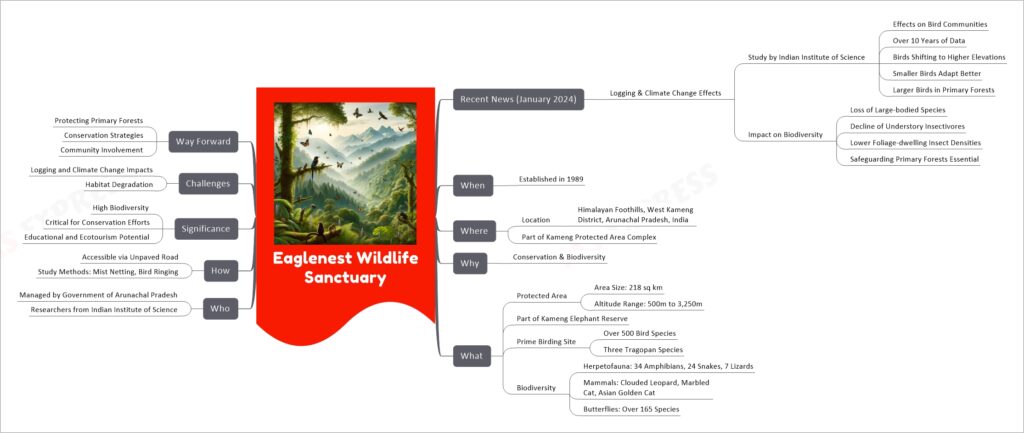Eaglenest Wildlife Sanctuary

Eaglenest Wildlife Sanctuary, located in the Himalayan foothills of Arunachal Pradesh, India, is a crucial biodiversity hotspot established in 1989. It spans 218 square kilometers with an altitude range from 500 to 3,250 meters and is a part of the Kameng Elephant Reserve. Known for its rich bird life with over 500 species, including rare tragopans, the sanctuary also hosts diverse herpetofauna, mammals, and over 165 butterfly species. Recent studies by the Indian Institute of Science reveal that logging and climate change are affecting bird communities, causing species to shift to higher elevations and threatening biodiversity. Protecting primary forests and involving local communities are seen as vital steps for conservation.
If you like this post, please share your feedback in the comments section below so that we will upload more posts like this.

